
Communicating the Voices of the Unheard:
The Photography of Dorothea Lange


Communicating the Voices of the Unheard:
The Photography of Dorothea Lange

Lange is most famous for her photograph of a destitute woman entitled "Migrant Mother." This photograph depicts Florence Owens Thompson and her three children huddled in a tent in Nipomo, California.
"Within that anxiety that is written all over her face, you can also see that she's actually a very beautiful woman. And that's really part of what Lange's genius was about: That she could make pictures of very poor people — people very, very hard hit — and still make them extremely attractive individuals."
— Linda Gordon, author of Dorothea Lange: A Life Beyond Limits, quoted in "Dorothea Lange: Drawing Beauty Out Of Desolation," 2010 (NPR)
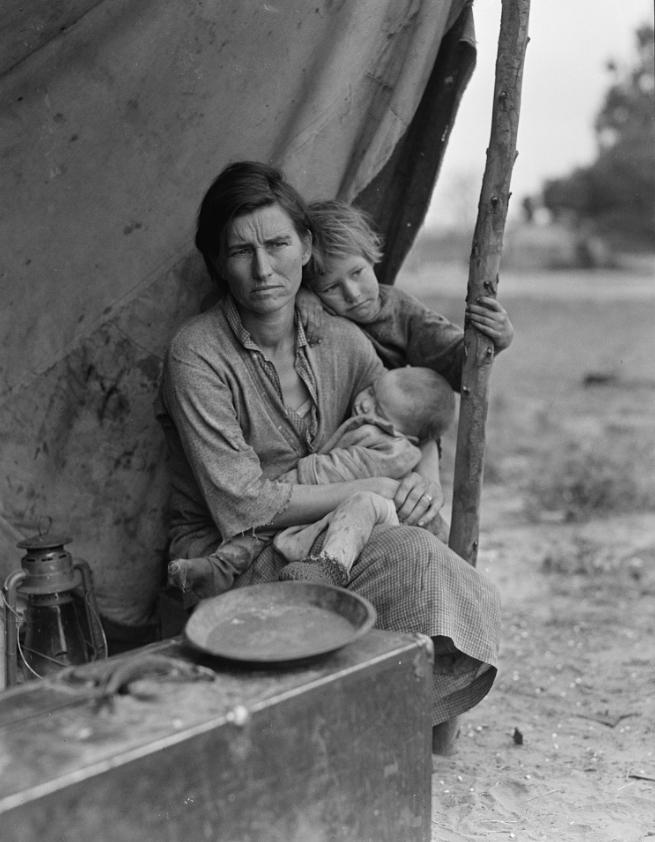
"Nipomo, Calif. Mar. 1936. Migrant agricultural worker's family. Seven hungry children. Mother aged 32," Dorothea Lange, 1936 (U.S. Farm Security Administration/Office of War Information. Prints & Photographs Division)
"There she sat in that lean-to tent with her children huddled around her, and seemed to know that my pictures might help her, and so she helped me. There was a sort of equality about it."
— Dorothea Lange in "The Assignment I'll Never Forget: Migrant Mother," February 1960 (Popular Photography)

"Nipomo, Calif. Mar. 1936. Migrant agricultural worker's family. Seven hungry children. Mother aged 32, the father is a native Californian. Destitute in a pea pickers camp, because of the failure of the early pea crop. These people had just sold their tent in order to buy food. Most of the 2,000 people in this camp were destitute," Dorothea Lange, 1936 (U.S. Farm Security Administration/Office of War Information. Prints & Photographs Division)
"[Lange] never surpassed it. To me, it was the picture... The others were marvelous, but that was special... She is immortal.”
— Roy Stryker, head of the Information Division of the Farm Security Administration, 1973, quoted in Women in the Arts: Dorothea Lange
“Migrant Mother" was published by The San Francisco News in 1936, spreading the work of Lange and the FSA. Other newspapers followed, promoting awareness of the migrant crisis and advocating for help.
The emotion on Thompson's face resonated with people and the image became an enduring symbol of the Depression, communicating the harsh reality of migrant life to the rest of the country.
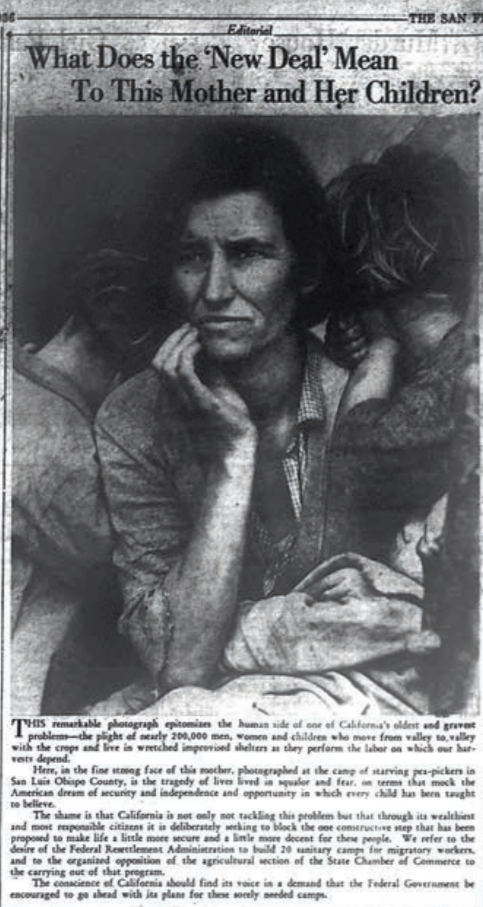
"What Does the 'New Deal' Mean To This Mother and Her Children?" (The San Francisco News, March 11, 1936 via "Dorothea Lange: Migrant Mother" by Sarah Meister)
"We are snowed under with requests for migratory labor pictures... All this material is being grasped at eagerly by all press services, newspapers, and magazines. We are getting the greatest spread that we have ever had."
— Edwin Locke, another federal photographer, in a July 1936 letter to Lange quoted in "Dorothea Lange: Migrant Mother" by Sarah Meister
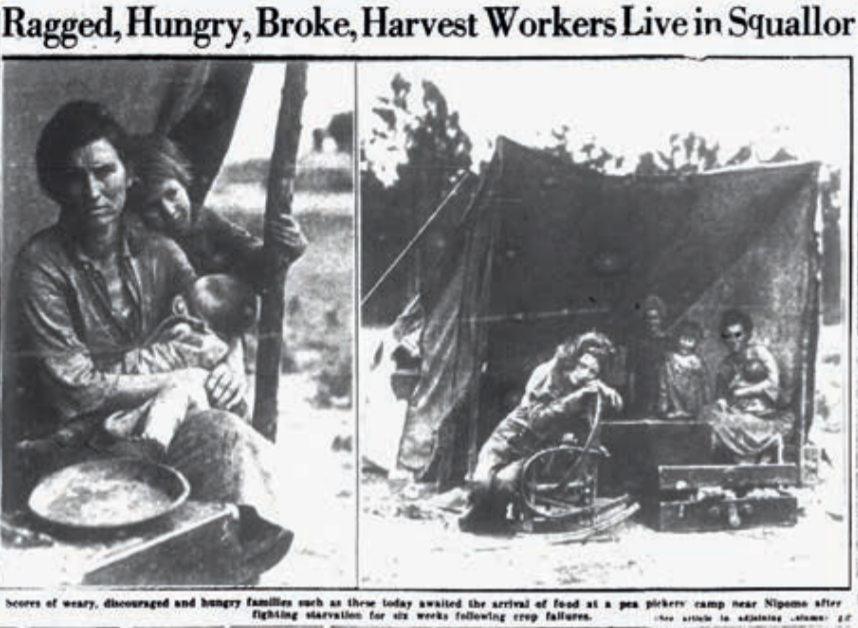
"Scores of weary, discouraged and hungry families such as these today awaited the arrival of food at a pea pickers' camp near Nipomo after fighting starvation for six weeks following crop failures." (The San Francisco News, March 10, 1936 via "Dorothea Lange: Migrant Mother" by Sarah Meister)
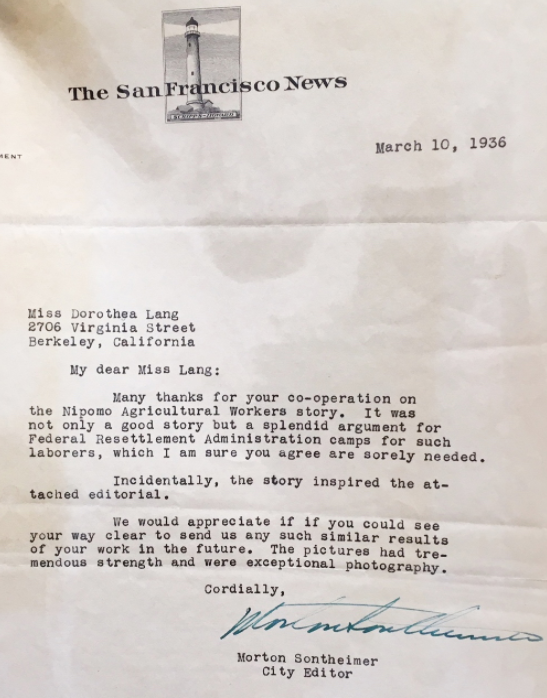
"Letter to DL from The San Francisco News, thanking her for supplying 'Migrant Mother' images," 1936 (Dorothea Lange Digital Archive, Oakland Museum of California)
By sharing the stories of migrants, newspapers inspired support for their plight. These papers emphasized that economic solutions were critical and that relief was needed for dislocated farmers.
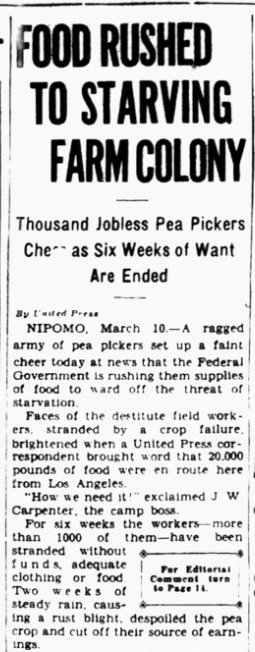
(The San Francisco News, Tuesday, March 10, 1936, found in "Dorothea Lange: Migrant Mother" by Sarah Meister)
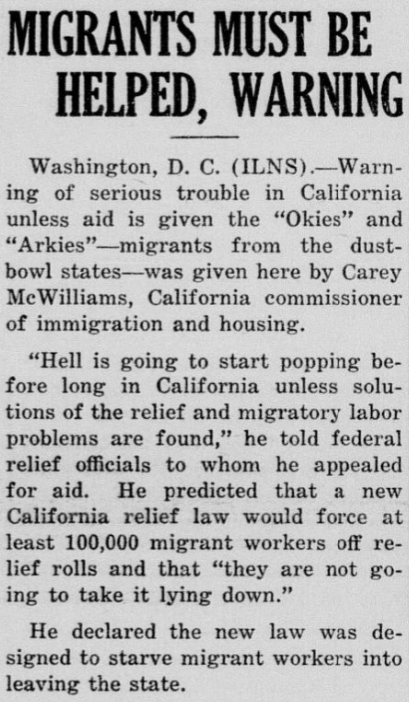
(The Butler County press, March 22, 1940, Chronicling America)
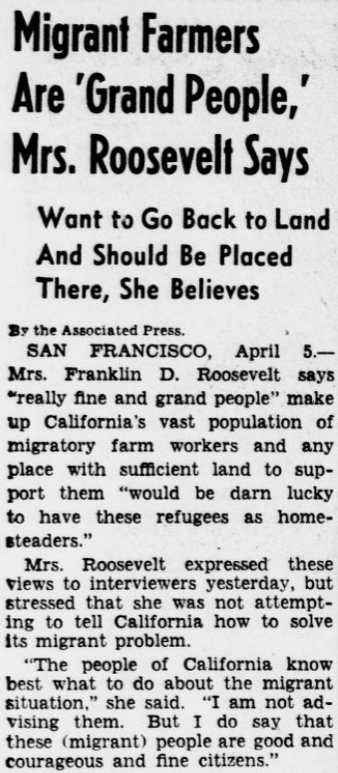
(Evening Star, Washington D.C., April 5, 1940, Chronicling America)
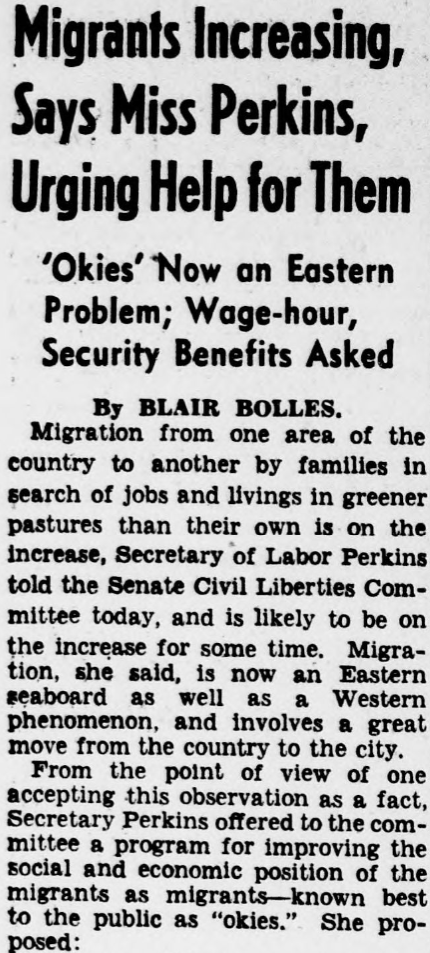
(Evening Star, Washington D.C., May 6, 1940, Chronicling America)